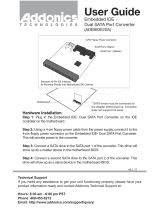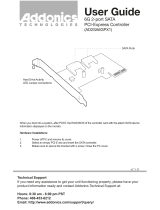
v
Contents
4.4.4 USB Conguration ........................................................ 4-22
4.4.5 Peripheral Conguration ...............................................
4-23
4.4.6 ACPI Conguration .......................................................
4-24
4.4.7 Power On Conguration ................................................
4-25
4.4.8 Hardware Monitor .........................................................
4-26
4.5 Server menu ...............................................................................
4-28
4.5.1 Remote Access Conguration .......................................
4-28
4.6 Security .......................................................................................
4-30
Change Supervisor Password ...................................................... 4-30
Change User Password ............................................................... 4-31
Password Check [Setup] .............................................................. 4-31
Password Lock Mode [Disabled] .................................................. 4-31
Removable Device Boot [Enabled] .............................................. 4-31
Flash Write [Disabled] .................................................................. 4-31
4.7 Boot menu ..................................................................................
4-32
4.7.1 Boot Device Priority ......................................................
4-32
4.7.2 Boot Settings Conguration ..........................................
4-33
4.8 Exit menu ....................................................................................
4-34
Chapter 5: RAID conguration
5.1 Setting up RAID ............................................................................ 5-1
5.1.1 RAID denitions ..............................................................
5-1
5.1.2 Installing hard disk drives ................................................
5-3
5.1.3 Setting the RAID item in BIOS ........................................
5-3
5.1.4 RAID conguration utilities ..............................................
5-3
5.2 LSI Logic Embedded SATA RAID Setup Utility ..........................
5-4
5.2.1 Creating a RAID 0 or RAID 1 set ....................................
5-5
5.2.2 Creating a RAID 10 set ..................................................
5-11
5.2.3 Adding or viewing a RAID conguration .......................
5-15
5.2.4 Initializing the logical drives ..........................................
5-18
5.2.5 Rebuilding failed drives .................................................
5-23
5.2.6 Checking the drives for data consistency .....................
5-25
5.2.7 Deleting a RAID conguration .......................................
5-28
5.2.8 Selecting the boot drive from a RAID set ......................
5-29
5.2.9 Enabling the WriteCache ..............................................
5-30
5.3 Intel
®
Matrix Storage Manager Option ROM Utility ................. 5-31
5.3.1 Creating a RAID 0 set (Stripe) ......................................
5-32
5.3.2 Creating a RAID 1 set (Mirror) ......................................
5-34
5.3.3 Creating a RAID 10 set (Stripe + Mirror) .......................
5-35





















